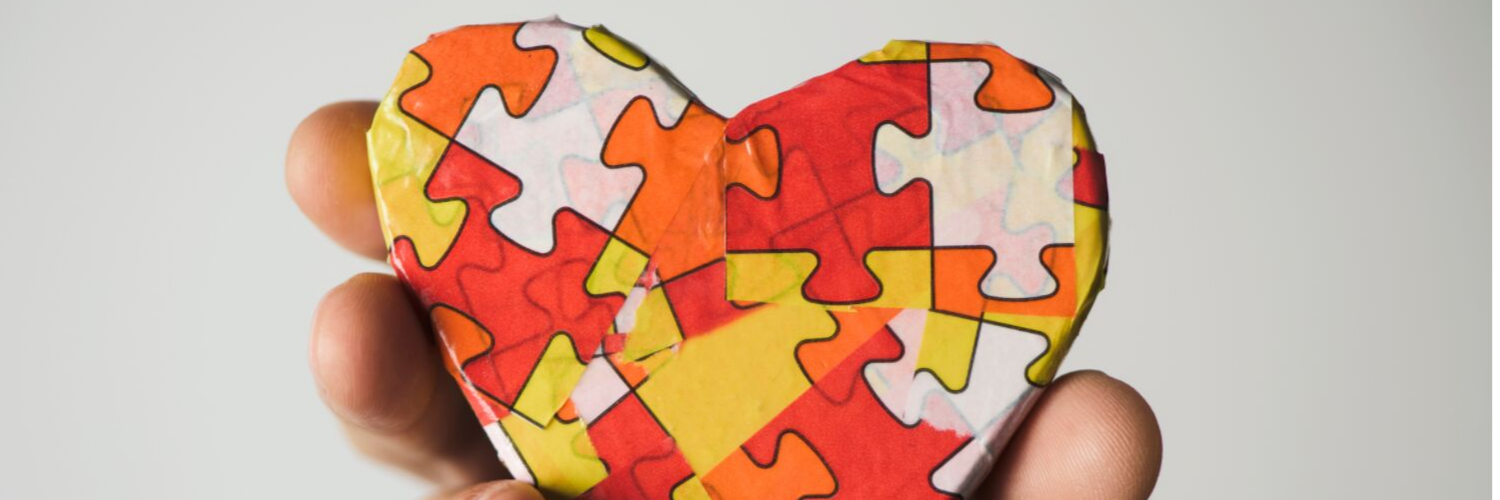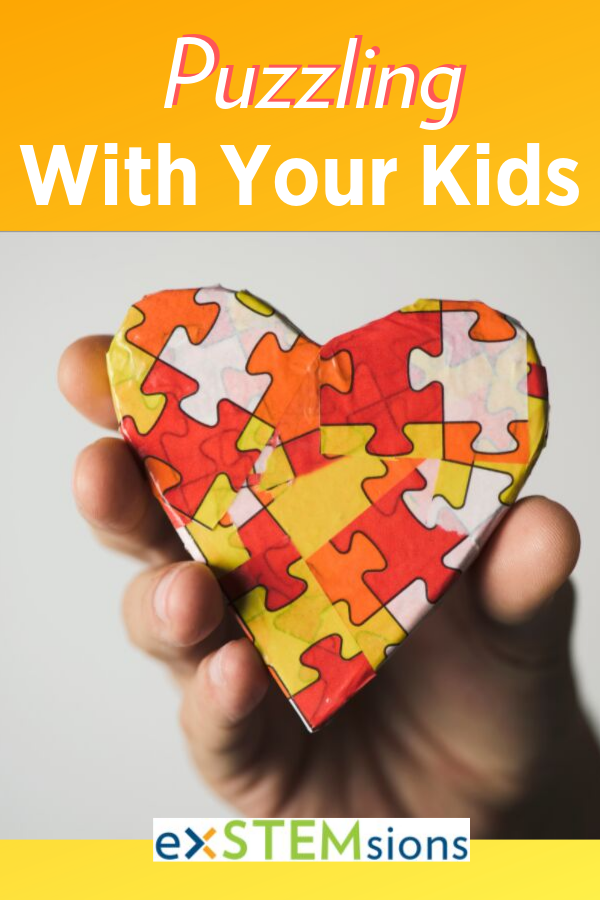Puzzling with your Kids

Everybody loves a puzzle
There is an interesting thing that happens when you place a puzzle on a table in a roomful of people: slowly but surely, everyone gravitates to it at one point or another, and fiddles around with it a bit! It’s something I’ve seen in classrooms (with kids, and with adults), at conferences, and in my own home. And it doesn’t really seem to matter what kind of puzzle it is; whether it’s a really difficult jigsaw puzzle with 1000 pieces, a jigsaw aimed at kids with way fewer pieces, or other kinds of puzzles, like tangrams, everyone just wants to play with it. People just can’t resist the pull of an undone puzzle!
Christmas puzzling
We got to see this phenomenon at work last Christmas, here, in my own house. My daughter was working on a challenging jigsaw puzzle on our dining room table. Once the family started to filter in for the holiday, they all started to join her in her puzzlework. Our family consists largely of adults who are more than happy to poke at a puzzle, piece by piece, either as individuals, or in groups, over a few days. They would walk around it, add a piece, and then drift back to whatever else they were doing.
I loved watching this. The puzzle quickly became a family project, and there was much discussion about puzzle-solving strategy (especially when strategies were different!). The teamwork and discussion were informative for my daughter to see and hear; by observing different approaches to working through the puzzle, she added new ideas and strategies to her puzzle-solving toolkit. But, for all the joy this brought, there was also one small downside that we had to work through. My daughter was so proud of her work on the puzzle. It was one that was difficult for her, and she had been gamely fighting through. She didn’t mind the help she was getting from family, and she actually learned a lot from hearing them talk about how they solve puzzles. When the puzzle was moving towards completion, though, she wanted to finish it herself. She’d put in the time and effort at the start, and wanted to feel the joy of putting in the last pieces. Since the puzzle had not actually begun as a communal effort, I understood why she wanted this, so I politely shooed the adults away towards the end. (And then had to keep shooing… and shooing.) The draw of the puzzle was so strong that even the adults among us found it incredibly difficult to stay away!
In the end, my daughter completed her puzzle, and we as a family enjoyed working together. And it really got me really thinking (with both my mom and teacher hats on) about the role we as adults play when kids are solving puzzles. Since we like puzzles too, it’s easy to join our kids and work together with them. When we do, our kids learn from our strategies, we can talk about math (like the properties of shapes and how they interact with each other), and we get the added bonus of spending good, quality time together. At the same time, though, sometimes helping and working together can unwittingly cross into the territory where we help a little too much.

Collaboration, not competition!
Kids learn amazing things from working on puzzles. They build spatial sense, logical thinking skills, patience, and persistence. Yes, they might get frustrated when a puzzle is hard, as my daughter sometimes feels; but I also saw my daughter get frustrated when she didn’t get the chance to do things for herself. Adults and children collaborating and working cooperatively to solve a puzzle is a worthy thing, but it’s important to remember that if the adults are driving the process, we’re stealing a little bit from what our kids could be learning. I tell my kids all the time that playing together means that no one gets to say “we have to do this MY way”. And that goes for the grown-ups too.
Sometimes it’s hard for us grown-ups to let the kids figure out the path, set the plan, and yes, make the mistakes, even when you KNOW that there is an easier, better, more efficient way to do it. It can be difficult to resist organizing, reorienting, or just generally taking over what our kids might be struggling with. And for many of us, it’s really hard to see something left in an incomplete state for any amount of time. But it’s imperative that we let our kids do what they need to do in order to learn for themselves. We all learn more when we get to participate, figure out the process, and do the hard work of encountering and overcoming roadblocks - this is true for adults, and for kids. So, when we adults take over a project, or finish a puzzle that one of our kids was struggling through, we’ve taken away their chance to learn from it.
The next time you see your hand reach out to move that piece for your child, pull it back. When you see yourself begin to separate all the different colors, because that’s how you do a jigsaw, pause. Now, ask your kids if they want your help (sometimes, as painful as it is, they don’t). If they do, offer suggestions, talk about other ways of thinking. But remember that you aren’t the driver on this puzzle-solving journey, or even the backseat driver! You are the occasionally helpful passenger, who generally doesn’t mind that the driver took the long way home, because you know that the driver is learning with every trip! The joy you’ll feel when the puzzle journey is completed isn’t the satisfaction of putting that last puzzle piece into place, it’s the joy you’ll feel when you see that satisfaction on the face of your child. I’ll be a passenger on that ride any day! (For more on the value of letting your children discover mathematics for themselves, see our blog here.)
Find this post interesting? Follow the blog using the link at the top of the page to get notified when new posts appear!
Want awesome tips and a mini-challenge, all designed to help you build vital problem-solving and critical thinking skills in your child? Click here to sign up for our monthly newsletter!
Want to solve some puzzles together as a family? Check out Paradox in our TpT store!



